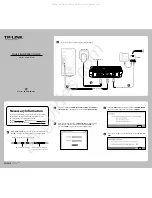
5-18
Catalyst 4500 Series Switch, Cisco IOS Software Configuration Guide - Cisco IOS XE 3.9.xE and IOS 15.2(5)Ex
Chapter 5 Configuring Virtual Switching Systems
Understanding Virtual Switching Systems
Layer 3 Protocols
The VSS Active supervisor engine runs the Layer 3 protocols and features for the VSS. All layer 3
protocol packets are sent to and processed by the VSS Active supervisor engine. Both member switches
perform hardware forwarding for ingress traffic on their interfaces. If possible, to minimize data traffic
that must traverse the VSL, ingress traffic is forwarded to an outgoing interface on the same switch.
When software forwarding is required, packets are sent to the VSS Active supervisor engine for
processing.
The same router MAC address, assigned by the VSS Active supervisor engine, is used for all Layer 3
interfaces on both VSS member switches. After a switchover, the original router MAC address is still
used. The router MAC address is configurable and can be chosen from three options: virtual-mac
(derived from domainId), chassis-mac (preserved after switchover), and user-configured MAC address.
VSS uses virtual MAC address as the default.
The following sections describe Layer 3 protocols for a VSS:
•
•
•
•
IPv4
The supervisor engine on the VSS Active switch runs the IPv4 routing protocols and performs any
required software forwarding. All routing protocol packets received on the VSS Standby switch are
redirected to the VSS Active supervisor engine across the VSL. The VSS Active supervisor engine
generates all routing protocol packets to be sent out over ports on either VSS member switch.
Hardware forwarding is distributed across both members on the VSS. The supervisor engine on the VSS
Active switch sends Forwarding Information Base (FIB) updates to the VSS Standby supervisor engine,
which installs all routes and adjacencies in its hardware.
Packets intended for a local adjacency (reachable by local ports) are forwarded locally on the ingress
switch. Packets intended for a remote adjacency (reachable by remote ports) must traverse the VSL.
The supervisor engine on the VSS Active switch performs all software forwarding (for protocols such
as IPX) and feature processing (such as fragmentation and TTL exceed). If a switchover occurs, software
forwarding is disrupted until the new VSS Active supervisor engine obtains the latest CEF and other
forwarding information.
In virtual switch mode, the requirements to support non-stop forwarding (NSF) match those in
standalone redundant mode of operation.
From a routing peer perspective, Multi-Chassis EtherChannels (MEC) remain operational during a
switchover (only the links to the failed switch are down, but the routing adjacencies remain valid).
The VSS achieves Layer 3 load-balancing over all paths in the FIB entries, be it local or remote.
IPv6
VSS supports IPv6 unicast and multicast as it is there on standalone system.
Summary of Contents for Catalyst 4500 Series
Page 2: ......
Page 4: ......
Page 2086: ...Index IN 46 Software Configuration Guide Release IOS XE 3 9 0E and IOS 15 2 5 E ...
















































